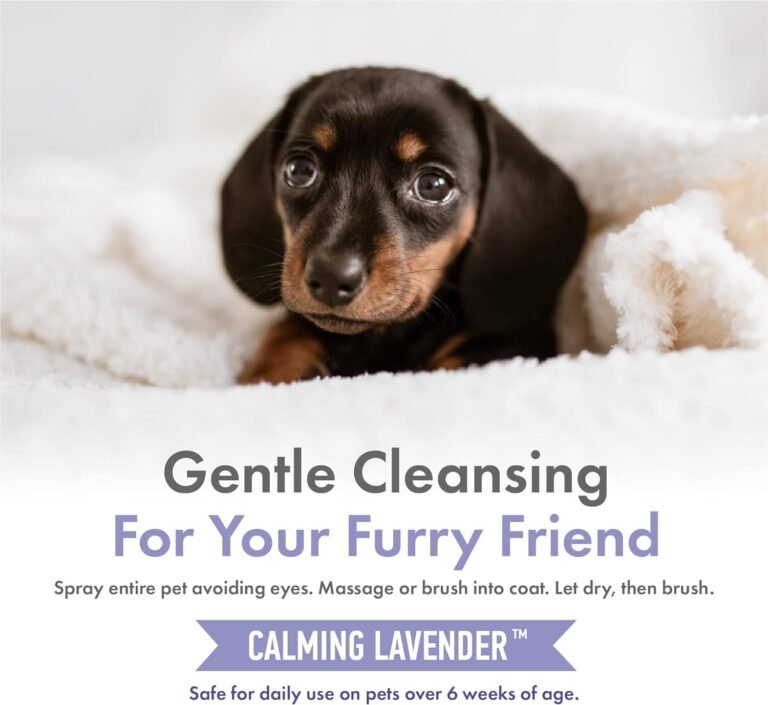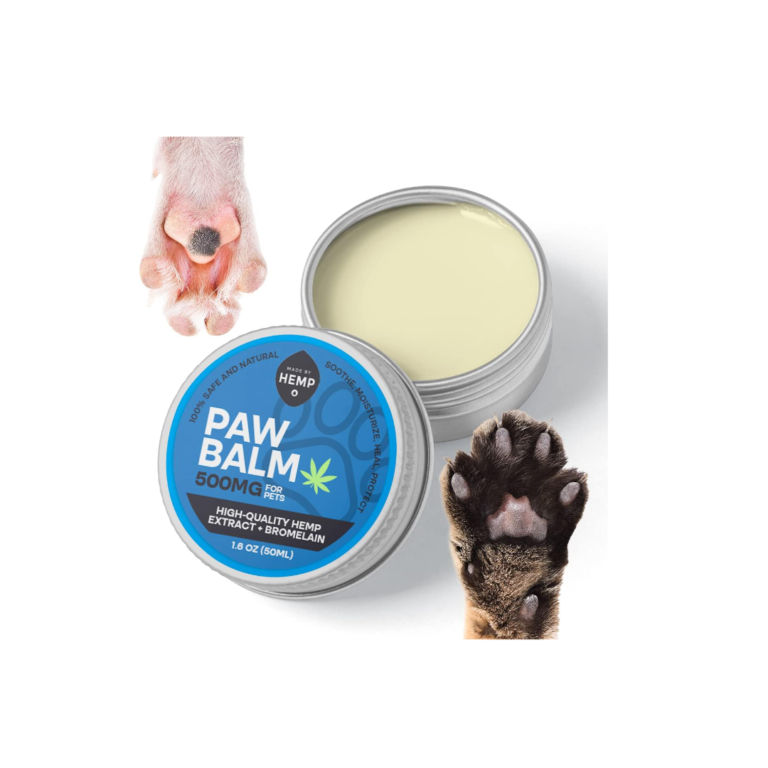Essential Grooming for Pet Health and Hygiene
Proper grooming is essential for the health and hygiene of pets. It not only keeps them looking their best but also prevents various health issues. In this article, we will explore the importance of pet grooming and provide key takeaways on understanding the importance of grooming, choosing the right tools and products, establishing a regular grooming routine, and addressing common grooming challenges.
Key Takeaways
- Regular grooming helps maintain a clean and healthy coat for pets.
- Grooming prevents skin conditions and promotes dental health.
- Proper nail care is important for pets’ overall health.
- Choosing the right grooming tools and products is crucial.
- Establishing a regular grooming routine is essential for pet care.
Understanding the Importance of Pet Grooming

Maintaining a Clean and Healthy Coat
Regular brushing is essential for maintaining a clean and healthy coat for your pet. Brushing helps prevent shedding and keeps their coat healthy and shiny. It also promotes the distribution of natural oils, which nourishes their skin and fur. Additionally, brushing allows you to detect any tangles, mats, or skin issues early on, preventing discomfort and potential infections. Make sure to use the appropriate brush or comb for your pet’s coat type to ensure a soothing experience for them. Remember, a well-groomed coat not only looks great but also contributes to your pet’s overall health and well-being.
Preventing Skin Conditions
Regular inspections are crucial for maintaining your pet’s skin health. Check for any irregularities such as skin irritations, tumors, or bugs regularly. Early detection is critical for addressing health conditions as soon as possible. This allows you to discover early anomalies and intervene before they become more serious problems, boosting the chances of effective treatment and recovery.
Professional grooming services might be useful at times, especially for difficult jobs like specific breed cuts or handling frightened dogs. While we may desire to do it ourselves at times, enlisting expert assistance can make all the difference.
To prevent sunburn and skin damage, provide shade and consider using dog-friendly sunscreen on your furry friend during the warmer months.
Consistent flea and tick prevention is crucial year-round to safeguard your dog from the harmful effects of these parasites. Employ various preventative measures to keep your pet protected.
Regular bathing is essential for maintaining your pet’s skin and coat health. Use dog-specific shampoos and conditioners that address your dog’s specific needs, such as dry skin or allergies. Look for products that contain natural ingredients like aloe vera and oats, ensuring efficient dirt and grime removal while simultaneously enhancing your pet’s coat’s health and luster.
To protect your dog’s sensitive nose from potential harm, make it a daily practice to apply a nose balm. This routine not only provides moisture but also serves as a protective barrier, ensuring the well-being of your canine companion’s sensitive nose.
Your dog’s coat is more than just a furry exterior – it’s a reflection of their inner well-being. By paying attention to the signs of a healthy or unhealthy coat and adopting proactive grooming practices, you can enhance your dog’s overall quality of life. Contribute to the vitality of their skin and coat by providing them with a balanced diet and constant access to fresh water.
Promoting Dental Health
Dental hygiene is crucial for your dog’s overall health. Use a toothbrush and toothpaste specially for dogs to keep their teeth and gums clean. Regular teeth brushing can help prevent dental diseases such as gum infections, tooth decay, and bad breath. It is essential to use dog-specific toothpaste and toothbrushes to ensure their safety and effectiveness. Remember to always handle grooming tools with care and patience to ensure the safety and comfort of your dog during the grooming process.
Managing Nail Length and Health
Regular nail trimming is necessary to maintain your dog’s paw health. Trimming your dog’s nails regularly is necessary to keep its nails at an appropriate length, preventing discomfort and potential injuries. It is important to use pet-specific clippers for maintaining nail length. If you accidentally cut the quick and your dog’s nail starts bleeding, you can use styptic powder to stop the bleeding. Here are the tools needed for nail trimming:
- Nail clippers or grinder
- Styptic powder (to stop bleeding if you cut the quick)
Choosing the Right Grooming Tools and Products

Selecting the Appropriate Brush or Comb
When it comes to selecting the right brush or comb for your pet, it’s akin to choosing a painter’s brush – it makes all the difference. For your grooming arsenal, consider the following options:
- Slicker brushes for removing tangles
- Bristle brushes for smoothing coats
- De-shedding tools for managing excessive shedding
Each type of brush serves a specific purpose and is designed to cater to different coat types. By using the appropriate brush or comb, you can ensure that your pet’s coat stays healthy and well-maintained. It’s important to note that different brushes work best for different types of fur, so it’s essential to choose the right one for your pet’s specific needs.
Remember, selecting the right brush or comb is crucial for maintaining your pet’s coat and promoting their overall well-being.
Finding the Right Shampoo and Conditioner
Using products specifically formulated for dogs is important to maintain their skin and coat health. Look for shampoos and conditioners that address your dog’s specific needs, such as dry skin or allergies. Ginger and Bear’s Cloversoft Plant-Based Two-in-One Pet Shampoo and Conditioner is a pH-balanced, 100% plant-based formula containing organic aloe vera and oats, ensuring efficient dirt and grime removal while simultaneously enhancing your pet’s coat’s health and luster. Dog-specific shampoos and conditioners are designed to meet the unique needs of dogs and can help keep their skin and coat in optimal condition. Consider using Ginger and Bear’s Pure and Natural Organic Ear wash to keep your dog’s ears clean and healthy. Regular ear cleaning is especially important for dogs with floppy ears to prevent ear infections. Choose an ear cleaner recommended by your veterinarian and follow the label instructions for safe and effective use.
Exploring Grooming Accessories
When it comes to grooming accessories, choosing the right tools and products is essential for maintaining your pet’s health and hygiene. One important accessory to consider is dog conditioner, which can help keep your pet’s coat soft, shiny, and free from tangles. Dog conditioners are specially formulated to moisturize and nourish the fur, making it easier to brush and preventing mats and tangles. Look for a conditioner that is specifically designed for dogs and avoid using human products, as they may contain ingredients that can be harmful to pets. Applying a small amount of conditioner after shampooing can make a big difference in the overall appearance and manageability of your pet’s coat. Remember to rinse thoroughly to remove any residue. Along with a good conditioner, other grooming accessories to consider include brushes, combs, nail clippers, and shampoos. These tools can help you keep your pet’s coat clean, healthy, and free from skin conditions. By investing in the right grooming accessories, you can ensure that your pet looks and feels their best.
Considering Natural and Organic Options
When it comes to grooming products for your pet, natural and organic options are becoming increasingly popular. These products are made with pure and natural ingredients, free from preservatives, dyes, and chemicals that can be harmful to your pet’s health. By choosing natural and organic grooming products, you can ensure that you are providing the best care for your furry friend.
Here are some benefits of using natural and organic grooming products:
- Gentle on the skin: Natural ingredients are gentle on your pet’s skin, reducing the risk of irritation and allergies.
- Environmentally friendly: Organic products are made using sustainable practices, minimizing their impact on the environment.
- Safe and non-toxic: Natural and organic products are free from harmful chemicals, making them safe for your pet and the whole family.
Remember, when selecting grooming products, look for certified organic options that meet the highest standards of quality and safety. Your pet deserves the best!
Establishing a Regular Grooming Routine

Creating a Comfortable Grooming Environment
Creating a comfortable grooming environment is essential for both you and your pet. The grooming area should be secure and comfortable, ensuring that your pet feels safe and relaxed. Gentle handling is key during grooming sessions, as it helps reduce stress and anxiety. Remember to give your pet regular breaks, especially if they are anxious or elderly. This allows them to rest and recharge before continuing with the grooming process.
To make the grooming experience more enjoyable, consider implementing the following tips:
- Use soothing tones and rewards to create a favorable association with grooming.
- Check for any irregularities such as skin irritations or bugs regularly.
- Start grooming sessions early to acclimate your pet to the procedure.
Creating a comfortable grooming environment not only ensures the well-being of your pet but also strengthens the bond between you and your furry friend.
Developing a Step-by-Step Grooming Process
When developing a step-by-step grooming process for your pet, it’s important to consider their individual needs and comfort. Start by creating a calm and secure grooming environment where your pet feels safe and relaxed. This can be a designated grooming area or a quiet corner of your home. Gently introduce your pet to the grooming tools you will be using, such as brushes, combs, and clippers. Take your time and be patient, allowing your pet to sniff and investigate the tools before starting the grooming process.
Next, establish a routine that works for both you and your pet. Break the grooming process into smaller steps to make it more manageable and less overwhelming. For example, start with brushing and gradually introduce other tasks like nail trimming and ear cleaning. Reward your pet with treats and praise throughout the grooming session to reinforce positive behavior.
Finally, set realistic grooming frequency based on your pet’s breed, coat type, and individual needs. Some pets may require daily grooming, while others may only need grooming once a week. Observe your pet’s coat and skin condition to determine the appropriate grooming schedule. Remember, regular grooming not only keeps your pet looking their best, but it also promotes their overall health and well-being.
Setting Realistic Grooming Frequency
Consistent dog grooming doesn’t require clockwork precision, but it does benefit from regularity. Frequency and duration should be customized to your dog’s unique coat and lifestyle. Short-haired breeds might thrive on weekly sessions, whereas long-haired companions could need daily attention to prevent matting. Aligning your dog’s grooming schedule with your pet’s needs will not only maintain proper hygiene but also promote healing and distribute natural oils, ensuring moisturization for the skin and coat. To determine the appropriate grooming frequency for your dog, consult with your groomer. They can provide personalized recommendations based on your dog’s specific needs and breed characteristics. Remember, regular grooming sessions are a must for your dog’s overall well-being.
Incorporating Positive Reinforcement
Finish on a high note with goodies, playing, or snuggles. This repeats your pet’s pleasant grooming experience and helps them identify grooming with something nice. Remember to pick motivating rewards for your pet, whether it’s a special treat, a beloved toy, or some quality time together. You may build a positive connection with grooming by repeatedly praising your pet after each grooming appointment, making it a more pleasurable experience for both you and your furry buddy.
Addressing Common Grooming Challenges

Dealing with Shedding and Hairballs
Regular grooming is essential for managing shedding and hairballs in your pet. Brushing their coat regularly helps to remove loose fur and prevent hairballs. Automatic Self Cleaning Cat Litter Box can also be a helpful tool in reducing hairballs by keeping the litter box clean and free of excess fur. Additionally, consider using de-shedding tools specifically designed for managing excessive shedding. These tools help to remove loose fur and prevent it from ending up on your furniture and clothes. Remember to keep your pet’s nails trimmed to prevent scratching and discomfort. If you’re unsure how to properly trim their nails, consult with a professional groomer for guidance.
Managing Mats and Tangles
Encountering mats and tangles can be quite a conundrum during grooming sessions. However, managing these challenges is a breeze with patience and the right tools. A detangling spray coupled with a sturdy comb can work wonders in gently separating knots without causing distress to your pet. Should mats become too intricate, professional groomers advocate for judicious trimming instead of forceful combing, as the latter can cause skin irritation and pain. The aim is to preserve your dog’s comfort while maintaining a clean, mat-free coat.
Grooming regularly can also help avoid matting, skin infections, and other frequent pet health problems. Tailored Grooming Regimens for Different Pets:
-
Felines: Cats are famed for grooming themselves, but they still require assistance. Brushing their coat removes stray fur and helps prevent hairballs. To avoid infections, keep their nails trimmed and their ears carefully cleaned.
-
Canines: Dogs come in a variety of breeds, each with their own grooming needs. Regular brushing helps prevent mats and tangles, and it’s also a great opportunity to bond with your pet. Trimming their nails and cleaning their ears are important for their overall hygiene.
Frequency and Duration: Tips for Consistent Dog Grooming
Consistent dog grooming doesn’t require clockwork precision, but it does benefit from regularity. Frequency and duration should be customized to your dog’s unique coat and lifestyle. Short-haired breeds might thrive on weekly sessions, whereas long-haired companions could need daily attention to prevent matting. Aligning your dog’s grooming schedule with your availability ensures that both you and your pet enjoy the process.
How often should I be brushing my dog?
The frequency of brushing can depend on your dog’s breed, coat type, and lifestyle. Pet care experts often recommend a consistent grooming schedule, which might vary from daily brushing for long-haired breeds to weekly for short-haired breeds. It’s important to create a routine that accommodates both your dog’s needs and your availability.
Are there different brushes I should use for different types of dog coats?
Yes, there are different brushes and combs suitable for different types of dog coats. Slicker brushes work well for removing tangles and mats, while bristle brushes are great for distributing natural oils and keeping the coat shiny. It’s important to choose brushes and combs that are suitable for your dog’s specific coat type.
Here are some recommended grooming tools:
- Detangling Spray: Helps gently separate knots without causing distress.
- Sturdy Comb: Ideal for gently detangling your dog’s fur.
- Slicker Brush: Works well for removing tangles and mats.
- Bristle Brush: Great for distributing natural oils and keeping the coat shiny.
- Nail Trimmer: Essential for keeping your pet’s nails trimmed.
- Ear Cleaner: Helps maintain clean and healthy ears.
Remember, grooming is not only about keeping your pet looking good, but it’s also an opportunity to bond and show them love and care.
Handling Ear Cleaning and Eye Care
Choose an ear cleaner recommended by your veterinarian and follow the label instructions for safe and effective use. Dogs with floppy ears are prone to ear infections and need regular cleaning. Ginger and Bear’s CanineTooth Gel with Eco-Friendly Bamboo Toothbrush: Our tooth gel helps freshen your dog’s breath, remove tartar and fight plaque without any preservatives, dyes or chemicals. The toothbrush is made of naturally-grown bamboo, containing no toxins, glues, or paints. In addition to bathing, regular grooming also includes cleaning your dog’s ears and eyes. By gently cleaning your dog’s ears, you can prevent infections and ensure their ears remain healthy. Furthermore, grooming also involves maintaining proper nail care. Overgrown nails can be painful for your fur friend and may cause difficulties in walking or even lead to joint problems. Trimming your dog’s nails regularly is necessary to keep its nails at an appropriate length, preventing discomfort and potential injuries.
Tackling Odor Control
Proper grooming practices have a significant impact on your dog’s overall health. Brushing regularly helps to remove loose fur and prevents matting, which can lead to skin infections and discomfort. It also stimulates blood flow to your dog’s skin, promoting a healthy and shiny coat. A well-groomed dog is less likely to develop skin allergies or hot spots. In addition to brushing, using top products specifically designed for odor control can help keep your dog smelling fresh. Look for shampoos and conditioners that contain natural ingredients like aloe vera and oats, ensuring efficient dirt and grime removal while simultaneously enhancing your pet’s coat’s health and luster. Consider using Ginger and Bear’s Cloversoft Plant-Based Two-in-One Pet Shampoo and Conditioner, which boasts a pH-balanced, 100% plant-based formula. Remember, a clean and fresh-smelling dog is a happy dog!
Addressing Common Grooming Challenges
Conclusion
In conclusion, regular grooming is essential for the health, hygiene, and happiness of your furry friend. By incorporating grooming into your routine, you can prevent health issues, maintain proper hygiene, and strengthen the bond between you and your dog. From brushing and bathing to dental care and ear cleaning, each grooming session provides an opportunity to care for your dog’s overall well-being. Whether you choose to groom your dog at home or seek professional grooming services, remember that a well-groomed dog is a beautiful companion and a happy, healthy pet.
Frequently Asked Questions
How often should I groom my pet?
The frequency of grooming depends on the breed, coat type, and activity level of your pet. Generally, dogs should be groomed at least once every 4-6 weeks.
What is the best brush or comb for my pet?
The best brush or comb for your pet depends on their coat type. Long-haired pets may require a slicker brush or a comb with wide-spaced teeth, while short-haired pets may benefit from a bristle brush or a rubber curry brush.
Can I use human shampoo on my pet?
No, it is not recommended to use human shampoo on pets. Human shampoos are formulated for human skin, which has a different pH level than pet skin. Using human shampoo can cause dryness, irritation, and other skin problems for your pet.
How do I clean my pet’s ears?
To clean your pet’s ears, use a veterinarian-recommended ear cleaning solution and a cotton ball or pad. Gently wipe the outer part of the ear, avoiding going too deep into the ear canal. If you notice any signs of infection or discomfort, consult your veterinarian.
How can I prevent my pet from getting mats and tangles?
Regular brushing is key to preventing mats and tangles in your pet’s coat. Use a brush or comb suitable for your pet’s coat type and brush them at least a few times a week. Pay extra attention to areas prone to matting, such as behind the ears and under the armpits.
Should I trim my pet’s nails myself?
Trimming your pet’s nails can be done at home, but it requires caution and proper tools. If you are not confident or comfortable doing it yourself, it is best to seek professional help. Overgrown nails can cause discomfort and even lead to health issues, so regular nail trimming is important.







